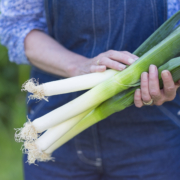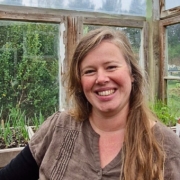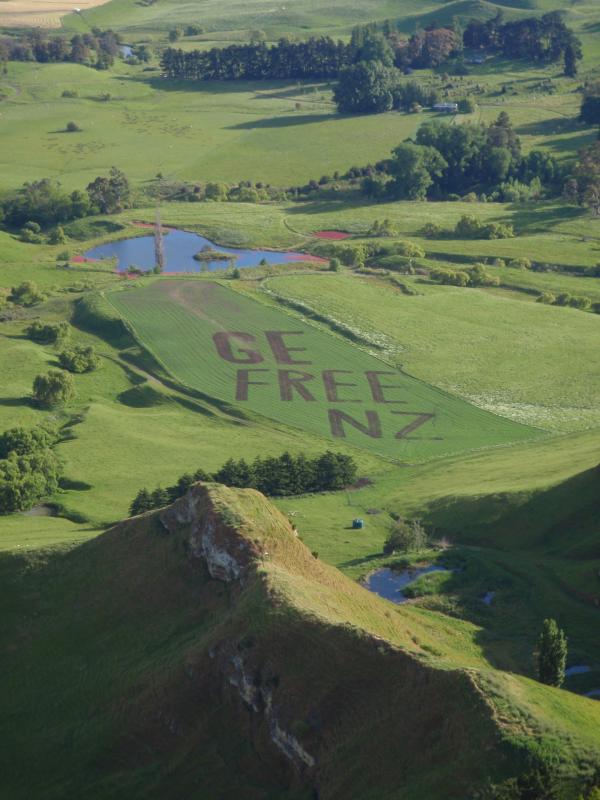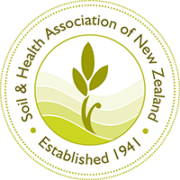The best of both worlds: Regen ag and organics
Aotearoa New Zealand is seeing a groundswell of regenerative agriculture. Martin Freeth finds out just how complementary the new thinking and practices are with our longer tradition of organic farming.
We hope you enjoy this free article from OrganicNZ. Join us for access to exclusive members-only content.
Southland farmer Tim Gow smiles to himself when regenerative agriculture (regen) is discussed. This organic sheep and beef farmer has been building soil quality, growing nutrient-dense feed for well-adapted animals, and concerning himself with carbon capture and retention for over three decades. The tenets of today’s regen movement are hardly new to him.
Says Tim: “I’m enthusiastic about the fact that many people are moving to regen, which is a whole lot better than using all that synthetic fertiliser and chemicals, but they seem to be overcomplicating something which is basically simple and actually very old.”
Sabbatical for the soil
Tim Gow began ‘sabbatical fallowing’ – the practice of annually locking up one seventh of the farm for much of the year to enable natural composting of plants and soil, and regeneration of everything that grows above and below ground – in 1987.
Tim and his wife Helen haven’t looked back since their first rotation when improvements started showing up in soil depth and biology, feed supply and livestock health. Their 469-hectare farm, Mangapiri Downs on rolling country near Blackmount, is now into its fifth rotation – and has long since become a strong platform for their stud breeding of distinctive Shire hair sheep (Wiltshire-Marsh cross) and polled Highland Tufty cattle.

Breeding for natural health
It’s also now more than three decades since the Gows achieved organic certification as meat and livestock producers through BioGro NZ (March 1989). For Tim, an organic approach to every aspect of farm management is a perfect, natural complement to fallowing. He hasn’t drenched or vaccinated an animal in 32 years – hasn’t needed to because Mangapiri’s adaptively bred sheep and cattle are so healthy on dense, diverse pastures and naturally enriched soils.
The Shire rams and ewes, and Tufty cattle, are marketed to farmers throughout New Zealand as organic livestock for use in their production flocks and herds. Both have been advanced (and trademarked) on the strengths of selective breeding for hardiness and meat production, and of the organic and fallowing management system at Mangapiri.
“Surely it’s time to reject chemicals, look to the basic cause of parasites and disease and move to organic methods of control, such as breeding the natural immunity back into your stock like they used to have before the chemicals and drench arrived over 60 years ago,” says Tim in his latest stud stock catalogue.
Building vitality in the soil
With sabbatical fallowing, that seventh portion of the farm is shut off each October, as a hay paddock would be, after being lightly grazed and having the residual of grasses, herbs and legumes trampled by the animals.
“You fold much of your spring growth and summer seeds down into the topsoil where it becomes compost … you leave it until late the next winter before putting stock in again to take the top off that paddock’s huge growth.”
The Gows import no feed and make no baleage; winter feed is all standing grass crops, mostly in blocks that are being fallowed that year. On shut-off areas, Tim has been amazed at the natural resurgence of plant life, including traditional grasses and Maku lotus not otherwise seen for decades.
“You can see the vitality in the soil … its organic matter, worm life and just the look and smell of it. It becomes soil that will get you through a drought or flood.”
Tim was inspired while travelling in Asia, the Middle East and Europe in the late 1970s and again in the mid-80s. He saw farmers applying their own versions of fallowing, and recognised this as ancient wisdom even referred to in the Bible, Koran and Torah.
“I came home determined to give it a go,” he says. Within a decade, the benefits of fallowing at Mangapiri were recognised by soil scientists from Invermay Research Station, who compared soils of the same type from 19 Southland farms.
What constitutes ‘regenerative’?
Could there be a more regenerative farmer? Tim Gow – organic producer, sabbatical fallowing practitioner and man of constant inquiry – will surely look the part to anyone reading this year’s ‘Regenerative agriculture in Aotearoa New Zealand’ paper from Manaaki Whenua Landcare Research.
The researchers’ literature review and wide consultation led them to identify a ‘regen mindset’ among farmers, with 11 core principles that include: treat the farm as a living system; maximise year-round photosynthesis; minimise disturbance; harness diversity; and manage livestock holistically – see sidebar.
The Manaaki Whenua team refrain from providing a standard definition of regen because, they say, of the diversity of ideas and practices in the regenerative basket, and because more work is needed to understand the contribution of concepts in te ao Māori like kaitiakitanga. There is nothing for regen, at least in New Zealand, as clear and concise as the international definition for organic agriculture (OA) – see sidebar.
Regen obviously does encompass the same ideas. As the Manaaki Whenua paper notes, regenerative principles and practices – the term itself originates from the United States in the late 1970s – are all about reversing the environmental damage now associated with conventional farming, and about managing ‘agroecosystems’ in holistic ways for continuous improvement in social and cultural terms as well as environmental. (An agroecosystem is a natural ecosystem modified by people for the production of food and fibre. For an overview of the concept and some related research, see sciencedirect.com/topics/agricultural-and-biological-sciences/agroecosystems.)

Regen network: Quorum Sense
In New Zealand today, there are said to be at least 1000 farmers systematically applying regen practices in their commercial production of milk, meat, fibre and/or plant crops. The figure comes from Quorum Sense, a farmers’ network formed in 2018 with a mission to ‘generate and share practical knowledge to support regenerative farm systems and vibrant rural communities’ – see quorumsense.org.nz. Quorum Sense holds seminars and field days, and shares stories online – all reflecting ‘learn together’ and ‘make context-specific decisions’ which are two more of the Manaaki Whenua-articulated principles.
Needless to say, many of regen’s ‘linked in’ farmers are also certified organic producers, or on their way to becoming so. They recognise the foundational importance of soil health, the value of multispecies pastures, and the need for great care in matching animals and their feed requirements to nature and local conditions, while also eschewing synthetic fertilisers and chemical control of diseases, pests and weeds.
You can see the vitality in the soil … its organic matter, worm life and just the look and smell of it. It becomes soil that will get you through a drought or flood.
Regen and organic working together
Russell and Charlotte Heald, dairy farmers near Norsewood in southern Hawke’s Bay, are a good example. Last season, they milked 385 cows (once a day), with no inorganic inputs, much care in the rotational grazing regime on their nine-species pastures, and a strong focus on prevention of cow health issues, not just treatment. The Healds see a perfect fit between regenerative and organic – and they expect to attain full certification this November.
“They’re working very well together as one cohesive system,” says Charlotte. “With organics there are few things no longer in the toolbox … you might want to apply a bit of N to help one paddock along or spray out some blackberry but you can’t and anyway, we now have effective alternatives,” says Russell, for whom the transition from conventional dairying began in 2017.
The Healds went regenerative first with advice from a biological farming advisor on a new pasture mix of grasses, herbs and legumes, and soil enhancement using fish-based products under the Biosea brand. Benefits in soil and plant health were evident in the first season, says Russell, along with a nearly $200,000 saving in feed costs and a much reduced bill for animal health.
Organic certification was the obvious next step, says Charlotte. “It was going well with all the changes we were making but we were also seeing how people increasingly want to know more about where their food comes from … to be assured of its quality and the integrity of the farming system. That’s where organic certification becomes so valuable … and it is also about completing the alignment with our own values.”
For Russell, the basics are the same. “It’s all about building the immunity and health of the animals, and that flows out of having healthier soil and healthier plants,” he says.
Not to be forgotten also is the need for farm profitability – and the Healds say their move to regenerative organic dairying has been positive in that regard, even through the particularly dry 2020–21 season.

11 regenerative principles
- The farm is a living system
- Make context-specific decisions
- Question everything
- Learn together
- Failure is part of the journey
- Open and flexible toolkit
- Plan for what you want; start with what you have
- Maximise photosynthesis (year round)
- Minimise disturbance
- Harness diversity
- Manage livestock strategically/holistically
More information available at: www.landcareresearch.co.nz
Market value and provenance of food
The regen movement definitely does have farmers’ financial health in mind: that’s part of social and cultural wellbeing. As the Manaaki Whenua paper notes, the longer-term aspiration is for regeneratively produced New Zealand food and fibre to accrue higher value as global markets recognise the embedded environmental benefits. In one sense, organic certification gives producers a headstart on this (as well as adding the quality assurance of ‘organic’ to each item of product).
Simon Osborne, mid-Canterbury arable farmer and co-founder of Quorum Sense, thinks regen will have market value in itself when the farming and ecosystem provenance of food can be conveyed directly from producer to consumer through digital communication. Meantime, he says, it just isn’t realistic, or necessary, for every regen farmer to strive for organic certification.
“It is probably relatively easy for pastoral farmers with their twin focus on soil fertility for growing grasses and on animal health because they have readily available organic options… it isn’t the same for large-scale arable producers like me, without huge additional costs and lots more bloody hard work,” says Simon.
No-till arable farming
His farming, on 280 hectares of mostly shallow clay loam near Leeston, is ‘no-till’ at its best in New Zealand. Simon has carried on and refined the practices of his father through 30 years of his own trial and error with different crops, companion planting and rotations. He grows wheat, barley, peas and various other crops – and he continues to trial new ones.
Today his soils have depth, structure and microbial activity like never before, supporting deeper roots and more vigorous growth above ground. The farm has been at various times a learning site for agronomy students at nearby Lincoln University.
He doesn’t use insecticides or fungicides and makes minimum, targeted use of nitrogen fertiliser, He does use glyphosate as a “primary cultivation tool” in different areas of the farm annually, prior to sowing. The only viable alternative would be extensive tillage, exposing the soil to more weeds, and pest and disease risks. That’s not an option for a farmer with such passion for his soil – and one whose soil tests show no detriment to microbial activity from very limited spraying.
People increasingly want to know more about where their food comes from … to be assured of its quality and the integrity of the farming system.
Common ground
Simon – and scores of others consulted for the Manaaki Whenua paper – see organic farming and regen both springing from the same philosophical, emotional and practical rejection of conventional, often called ‘industrial’ or ‘intensive’, agriculture with its bias to monoculture, and reliance on synthetic nitrogen and phosphate fertilisers, on agrichemicals and on animal antibiotics. These are all associated with freshwater water degradation, soil and biodiversity loss, excessive carbon emissions and climate change.
“We have a huge debt of gratitude to the pioneering organics movement. If they hadn’t held the line over the past 50 years, there would be no starting point for regen … industrial agriculture would have taken over lock, stock and barrel,” says Simon.
Manaaki Whenua describes regen as ‘a grass roots, farmer-driven movement founded in an ecological paradigm’ and its members as engaged in ‘wider systems thinking … with an outcomes focus’.
To farmers like Simon Osborne – and others in the regen movement spoken for this article – it all comes down to this mindset of the 11 principles, and to personal willingness and capability to adopt alternatives to the conventional model.
All share a disdain for farming based on manufactured inputs and production growth goals that have proven, longer-term damage to ecosystems. But they see no one alternative prescription for every farm or growing operation that will reverse the damage, while producing nutritious, affordable food for all and sustaining communities of farmers financially and socially. There is a common concern that achieving organic certification has become too prescriptive, and hence costly and time consuming, for farmers and too focused on creating niche consumer markets for food.

It all starts with soil health
Regenerative or organic, everything starts with soil health – that is certainly clear. Seems clear also that out on the land, Tim and Helen Gow, Russell and Charlotte Heald, and Simon Osborne are all moving in the same direction.
Martin Freeth is a journalist, consultant and olive grower based in the Wellington region.






